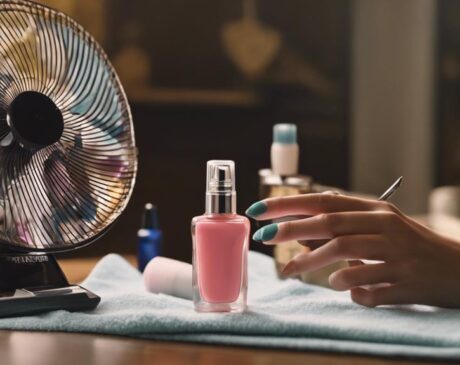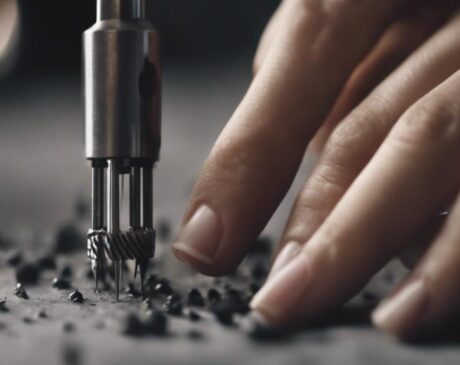Why Does My Nail Polish Never Fully Dry?
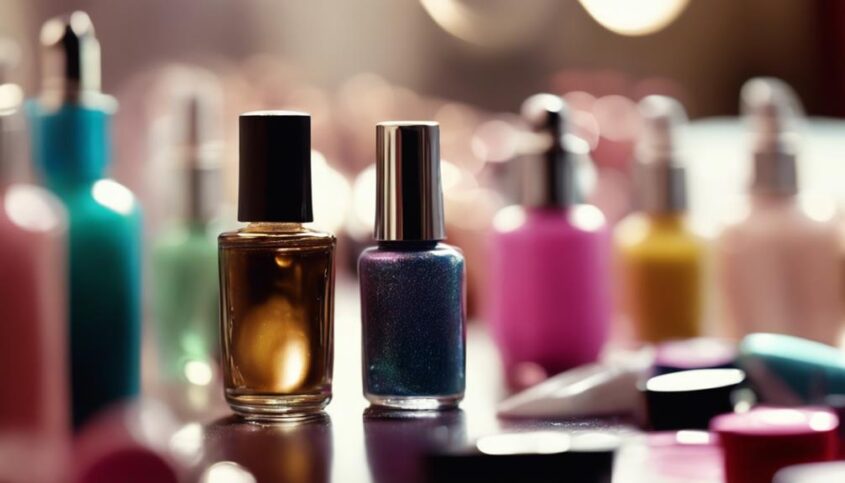
To ensure your nail polish fully dries, apply thin, even coats allowing each layer to dry completely. Avoid thick layers, as they hinder the drying process. Use quality nail polish brands with efficient drying formulas. Consider environmental factors like humidity and temperature for optimal drying. Allow sufficient drying time between coats to prevent smudging. For more in-depth insight on achieving perfectly dried nail polish, explore common mistakes and techniques that can help you achieve flawless results.
Key Takeaways
- Thin, even coats of polish dry faster and prevent tackiness and smudging.
- Quality nail polish with low water content dries quicker and offers a flawless finish.
- Moderate humidity and room temperature are ideal for efficient drying and durability.
- Rushing the process leads to imperfections; waiting between coats ensures proper drying.
- Proper nail surface preparation and ventilation aid in optimal drying and finish quality.
Incorrect Application Techniques
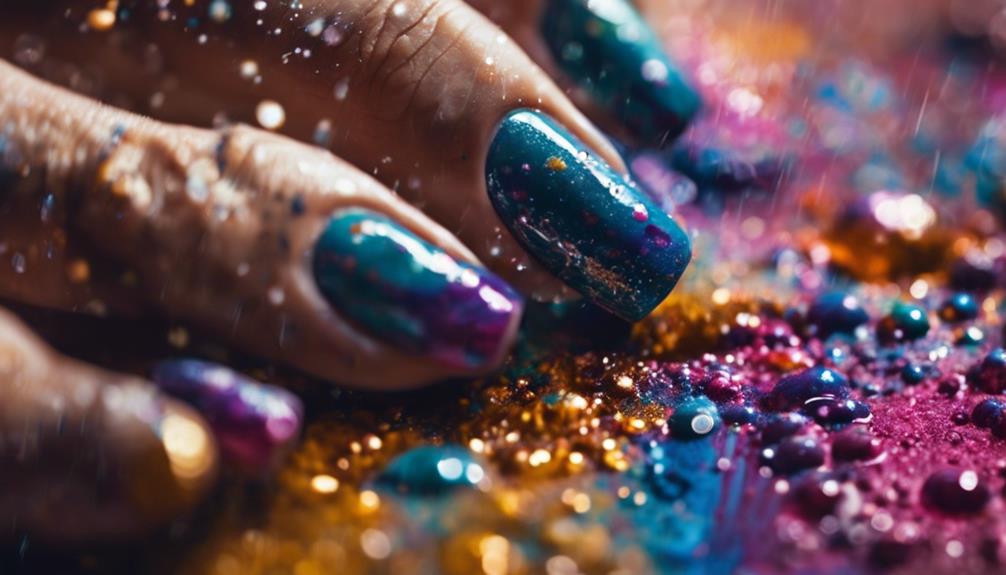
Improper application techniques of nail polish can significantly affect the drying process, leading to unsatisfactory results. One common mistake is applying thick layers of nail polish. Thick layers take longer to dry because the solvents in the polish struggle to evaporate properly. To expedite drying time, apply thin, even coats allowing each layer to dry completely before adding another. Additionally, failing to prep the nail surface properly can hinder drying. Oils, lotions, or residue on the nails create a barrier that prevents the polish from adhering correctly. To ensure proper adhesion and faster drying, cleanse nails with a gentle nail polish remover before applying color.
Furthermore, not allowing enough time for each layer to dry can lead to smudging and ultimately prolong the overall drying process. Patience is key when it comes to achieving perfectly dried nails. Lastly, improper ventilation can also impact drying time. Ensure the room you are in has adequate airflow to help the solvents evaporate efficiently. By mastering correct application techniques, you can optimize the drying process and achieve flawless, long-lasting nail polish results.
Low-Quality Nail Polish
When it comes to the issue of nail polish not drying fully, the quality of the product itself can play a crucial role, with low-quality nail polishes often leading to prolonged drying times and unsatisfactory results. Low-quality nail polishes may contain inferior ingredients that affect the formula's ability to dry efficiently. These polishes can have a higher water content, which evaporates more slowly, leading to extended drying periods. Additionally, the pigments and binders in lower-quality nail polishes may not be as finely milled or well-balanced, further hindering the drying process.
Innovation in the nail polish industry has seen the development of high-quality formulas that dry quickly and provide long-lasting, professional results. These innovative nail polishes often incorporate advanced technologies to enhance drying times without compromising on color payoff or finish. Investing in premium nail polish brands known for their quality formulations can significantly improve the drying experience and overall manicure results. By opting for superior products, individuals can enjoy efficient drying times and flawless nail finishes.
Thick Layers of Polish
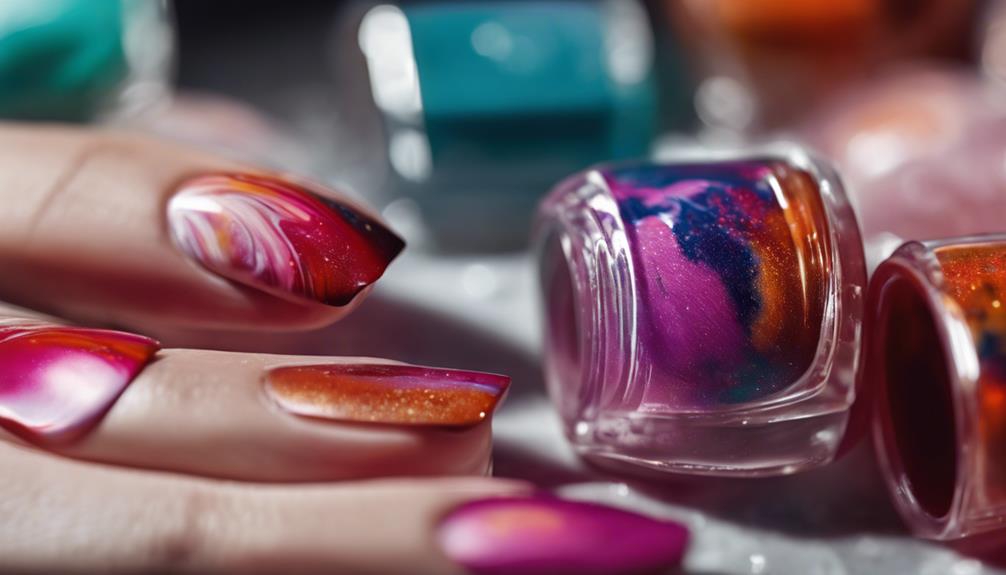
Excessive application of nail polish, particularly in thick layers, can significantly impede the drying process and lead to unsatisfactory results. When thick layers of nail polish are applied, each layer struggles to dry completely, causing the polish to remain tacky or smudge easily. This issue arises because the solvents in the polish have a harder time evaporating through the multiple layers, prolonging the overall drying time. To illustrate the impact of thick layers on drying time, consider the table below:
| Layers of Nail Polish | Drying Time Required | Overall Finish |
|---|---|---|
| Thin Layer | Quick | Smooth |
| Moderate Layer | Slightly Longer | Glossy |
| Thick Layer | Extended | Prone to Smudges |
To ensure optimal drying and a flawless finish, it's recommended to apply nail polish in thin, even layers. This method allows the solvents to evaporate efficiently, promoting faster drying and a more durable manicure.
Humidity and Temperature Factors
Appropriate levels of humidity and temperature play a significant role in the proper drying of nail polish, influencing both the efficiency and quality of the finish. High humidity levels can hinder the evaporation of solvents in the polish, leading to prolonged drying times and a higher likelihood of smudges and imprints. On the other hand, low humidity levels can cause the polish to dry too quickly, resulting in a brittle and uneven finish. Temperature also plays a crucial role, as colder temperatures can slow down the drying process, while warmer temperatures can speed it up.
To optimize drying conditions, it is recommended to apply nail polish in a room with moderate humidity levels, ideally between 40-60%, and at a comfortable room temperature of around 70-75°F. Additionally, using a fan or air conditioner can help control humidity levels and promote faster drying. By paying attention to these environmental factors, nail polish enthusiasts can achieve a quicker and more flawless finish.
Not Allowing Sufficient Drying Time
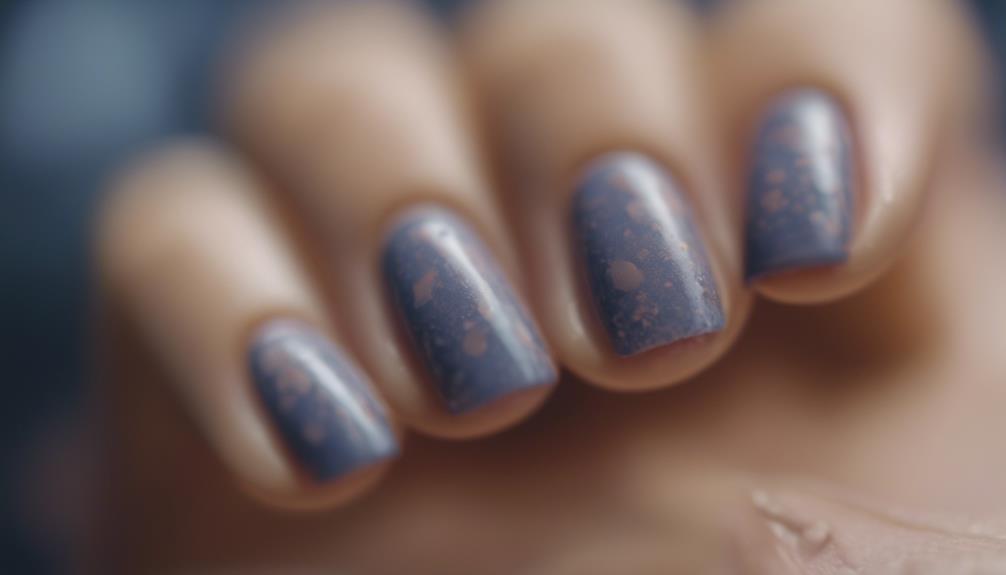
Insufficient drying time is a common culprit behind nail polish not drying fully. Rushing through the application process can lead to smudges, dents, or even air bubbles forming on the nail surface. To ensure your nail polish sets properly, it's crucial to allocate adequate time for each layer to dry before proceeding to the next step.
To help you manage your drying time effectively, consider the following tips:
| Tip | Description |
|---|---|
| Thin Layers | Apply thin coats of nail polish to promote faster and more even drying. |
| Quick-Dry Products | Utilize quick-dry topcoats or nail polish formulas to speed up drying time. |
| Drying Drops | Use drying drops to accelerate the setting process and enhance shine. |
| Avoid Thick Coats | Thick layers take longer to dry; opt for multiple thin coats instead. |
| Wait Between Coats | Allow a few minutes for each layer to air dry before applying the next one. |
Frequently Asked Questions
Can Using a Top Coat Help My Nail Polish Dry Faster?
Utilizing a quality top coat can indeed expedite the drying process of nail polish, ensuring a swift and flawless finish. This innovative addition acts as a protective shield, accelerating the setting time for a professional-grade manicure.
Is There a Specific Way to Shake or Mix the Nail Polish Bottle to Help It Dry Quicker?
To help nail polish dry quicker, gently roll the closed bottle between your palms instead of shaking it vigorously. This technique minimizes air bubbles that can interfere with the drying process, leading to a smoother and faster drying finish.
Will Using a Nail Dryer or Fan Speed up the Drying Process?
Utilizing a nail dryer or fan can accelerate the drying process of nail polish by increasing airflow around the nails. This innovative approach fosters efficient evaporation, hastening the setting of the polish for a flawless finish.
Are There Any Specific Ingredients in Nail Polish That Can Affect Drying Time?
Certain ingredients in nail polish, such as solvents like ethyl acetate or butyl acetate, can impact drying time. Quick-drying formulas often contain volatile substances that evaporate faster, leading to a more rapid and efficient drying process.
How Long Should I Wait Before Applying Multiple Coats of Nail Polish for Optimal Drying Results?
To achieve optimal drying results when applying multiple coats of nail polish, it is recommended to wait at least 2-3 minutes between each layer. This allows the previous coat to partially dry, creating a smoother and more durable finish.


